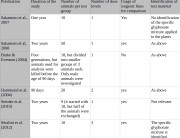Summary answer:
There is no requirement in any regulatory system to establish mechanism of action for a toxin before regulatory action can be taken and there is no burden of proof on scientists who find toxic effects to establish a mechanism before they report their findings. This is fortunate because it can take decades to establish mechanism, and sometimes a mechanism is never found.
Detailed answer:
Industry increasingly uses the “no known mechanism” argument to delay regulatory action. However, there is no requirement in any regulatory system in the world to establish mechanism of action for a toxin before regulatory action can be taken.
If regulators did have to wait until a mechanism was known, this would paralyze the regulatory system. It can take decades to establish a mechanism and sometimes one is never found. Scientists still do not fully understand how the insecticide DDT thins the shells of birds’ eggs. But this toxic effect is recognized and DDT has been restricted or banned for most uses in many countries.
Séralini suggested in his paper that the toxic effects found in his experiments may have been due to a hormonal mechanism. The fact that similar effects were seen from both NK603 maize and Roundup may be because the two substances affect the same biochemical pathways.1
In addition, Séralini’s analysis of the NK603 GM maize revealed that it contained significantly reduced (16–53%) amounts of two nutrients, ferulic and caffeic acids. This led Séralini to suggest that this may result in a lower protective effect offered by ferulic and caffeic acids against development of cancer. In addition, there is evidence to suggest that ferulic acid in particular may change oestrogen hormone function in mammalian cells. Therefore, a lower level of ferulic acid in the NK603 GM maize-containing diet may have a different effect on the oestrogen hormone system compared with the non-GM control diet.1
As Séralini stated in his paper, more research is required to test and see if these suggested mechanisms are correct and if not, to reveal alternative mechanisms through which the harmful effects are arising.
Séralini has been criticized for putting forward unproven hypotheses that may explain his findings, but this is usual practice for scientists who observe an effect for which the mechanism is not yet known. In some cases, future studies establish mechanism. In other cases, they do not.
What matters is that industry must not have market access for products for which have been found to have toxic effects. They must be withdrawn. If industry then wishes to find a mechanism, it is free to look for one without putting the public at risk.
References:
1. Séralini GE, Clair E, Mesnage R, et al. Long term toxicity of a Roundup herbicide and a Roundup-tolerant genetically modified maize. Food and Chemical Toxicology. November 2012; 50(11): 4221-4231.
Source of criticism:
Monsanto
http://www.monsanto.com/products/Documents/ProductSafety/seralini-sept-2012-monsanto-comments.pdf


















